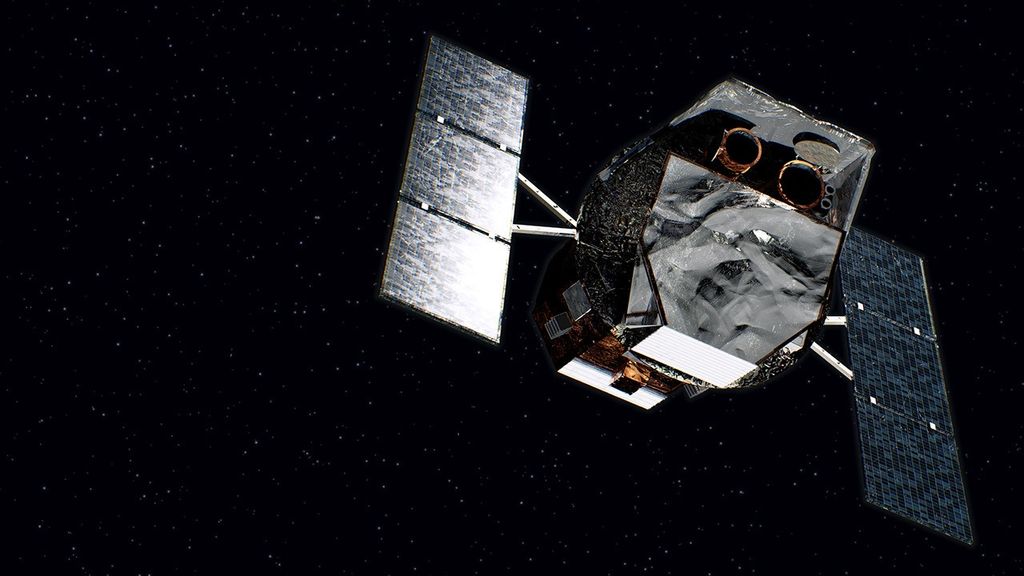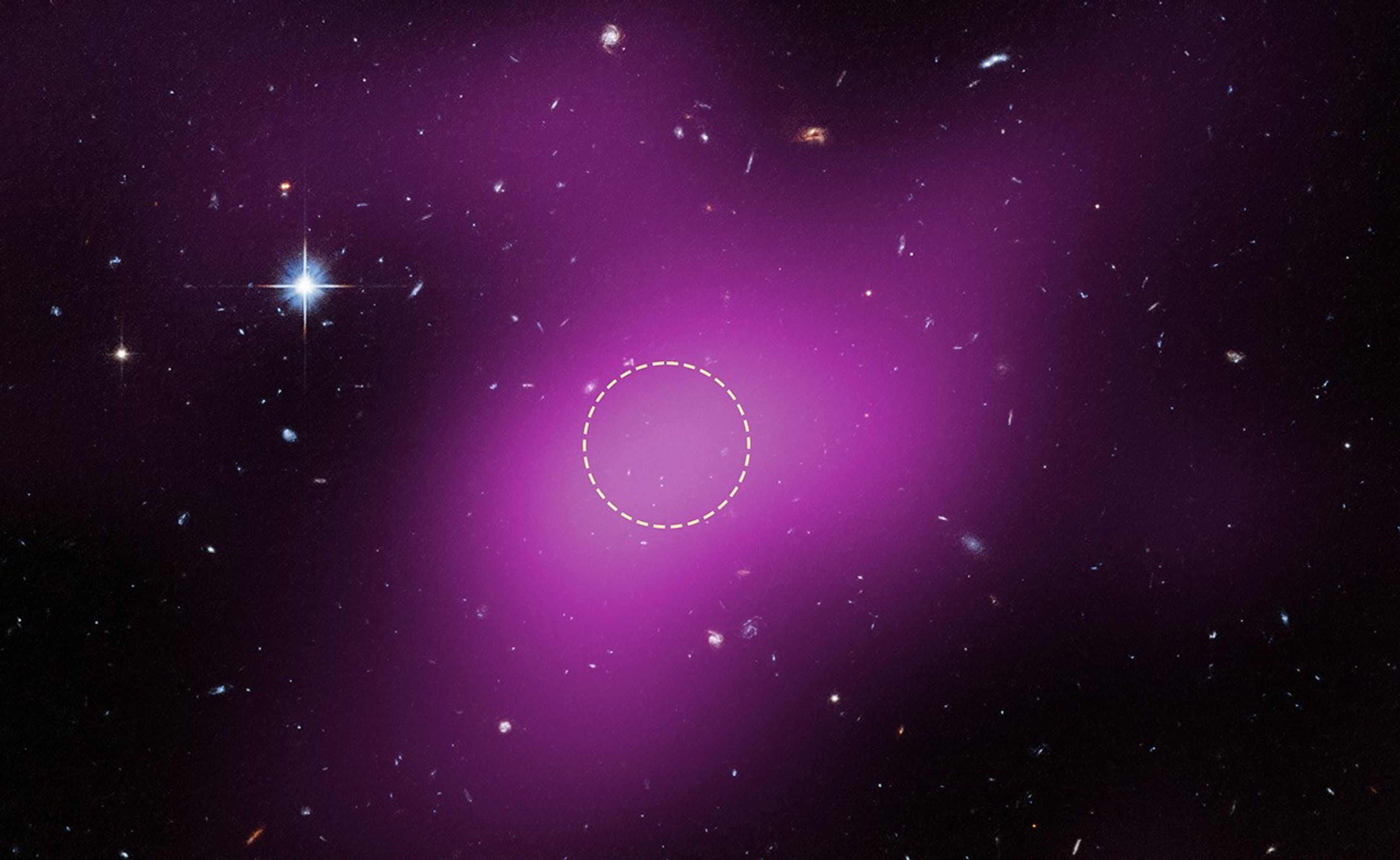The raised arcs, lines, dots, and other markings in this 17-by-11-inch Hubble Space Telescope image of the Carina Nebula highlight important features in the giant gas cloud, allowing visually impaired people to feel what they cannot see and form a picture of the nebula in their minds. Credit: NASA, ESA, and M. Mutchler (STScI/AURA) and N. Grice (You Can Do Astronomy LLC)
The Hubble Space Telescope's dramatic glimpse of the Carina Nebula, agigantic cloud of dust and gas bustling with star-making activity, isa glorious feast for the eyes. Energetic young stars are sculpting afantasy landscape of bubbles, valleys, mountains, and pillars. Nowthis celestial fantasyland has been brought into view for people whocannot explore the image by sight.
Max Mutchler, a research and instrument scientist at the SpaceTelescope Science Institute in Baltimore, and Noreen Grice, presidentof You Can Do Astronomy LLC and author of several tactile astronomybooks, have created a touchable image of the Carina Nebula that isengaging for everyone, regardless of their visual ability.
The 17-by-11-inch color image is embossed with lines, slashes, andother markings that correspond to objects in the giant cloud, allowingvisually impaired people to feel what they cannot see and form apicture of the nebula in their minds. The image's design is alsouseful and intriguing for sighted people who have different learningstyles.
"The Hubble image of the Carina Nebula is so beautiful, and itillustrates the entire life cycle of stars," says Mutchler, who, alongwith Grice, unveiled the tactile Carina image in January 2010, at theAmerican Astronomical Society meeting in Washington, D.C. "I thoughtthat people who are visually impaired should be able to explore itand learn from it, too."
Located 7,500 light-years from Earth, the nebula is a3-million-year-old gigantic cloud where thousands of stars are cyclingthrough the stages of stellar life and death. The nebula is 300light-years wide, but Hubble captured a 50-light-year-wide view of itscentral region.
A Hubble education and public outreach grant allowed Mutchler toproduce the special image. The grant is part of his Hubble archivalresearch project to create complete mosaics of a huge collection ofindividual Carina Nebula images taken by Hubble(http://archive.stsci.edu/prepds/carina/). Mutchler made 300 copies ofthe tactile image and will distribute them to organizations that servethe visually impaired, including state schools and libraries for theblind and the National Federation of the Blind in Baltimore, Md.
When Mutchler decided to make a tactile Carina Nebula image last year,he immediately called his friend Grice, who is a pioneer in designingtactile astronomy images for the blind.
But Grice says the nebula image is so visually rich, it posed achallenge to design a textured image that conveys its beauty andcomplexity.
"When I first looked at the image, I didn't know what to focus on,"she recalls. "In order to translate the image into a tactile image, Ihad to make certain that I understood the individual features thatmake up the image. There was so much to see."
She spent a couple of hours on the telephone with Mutchler, who gaveher a guided tour of the nebula. Then she parsed astronomy books,looking for other views of the nebula. One feature, in particular,gave her some trouble. It was the Keyhole Nebula. Grice couldn't seehow the shape in the image resembled a keyhole. Finally, she cameacross a 1950s image of Carina, and suddenly, she got it. The namereferred to the shape of an old-fashioned "skeleton" key. Somevisually impaired children who have touched the image say the featureactually resembles a foot, Grice says.
Choosing which features to show on the textured image also posed achallenge. Grice says she relied on a lesson she learned from herfirst NASA tactile astronomy book of Hubble images called "Touch theUniverse": less is more.
"Convey just enough to get the idea," she says. "Then provide someBraille text that explains the science and describes the scene. Apicture that is jammed with too many tactile details is veryoverwhelming for the mind's eye."
Grice used the Keyhole Nebula as the focal point and added otherimportant features suggested by Mutchler to tell the story of stellarlife and death, such as pillars of gas and dust that harbor infantstars, a cluster of young stars called Trumpler 14, and a massive,unstable star, Eta Carinae, that is near the end of its life.
The pair then developed a tactile code identifying the raised featuresand wrote a short guided tour that provides more information on thehighlighted on the features. The guide and an audio tour of the nebulaare on a special Web page called "The Tactile Carina Nebula"(http://amazing-space.stsci.edu/tactile-carina/), on Amazing Space,the Space Telescope Science Institute's education Web site.
A stable of seasoned tactile astronomy evaluators, including VivianHoette, the education outreach coordinator of the University ofChicago's Yerkes Observatory in Williams Bay, Wis., and Ben Wentworth,a retired teacher from the Colorado School for the Blind in ColoradoSprings, Colo., helped test several prototypes of the image. One suchevaluation place was the Youth Slam, held in the summer of 2009 inCollege Park, Md. The National Federation of the Blind coordinated theevent to promote careers in math, engineering, and science.
One of the biggest surprises from their testing was the image size.Grice and Mutchler originally thought that a large (almost6-foot-wide) or medium-sized (3-foot-wide) tactile image would beappropriate for students. The children who sampled the image, however,preferred the much smaller 11-by-17-inch image.
"Many students felt lost with the larger prototype versions becausecertain objects were separated by empty spaces," Grice says. "However,the smaller version allowed hands to easily track from one object toanother."
Adds Hoette, one of the evaluators: "The smaller size gives themenough details so they can get the big picture, and then they can readthe science behind it in Braille text, or they can listen to the audiotour on 'The Tactile Carina' Web page while they are touching theimage."
The Grice-Mutchler partnership has worked so well that the duo hopesto produce more tactile Hubble images. "It would be great to build upa catalogue of these images for the visually impaired," Mutchler says.
The Hubble Space Telescope is a project of international cooperationbetween NASA and the European Space Agency. NASA's Goddard SpaceFlight Center manages the telescope. The Space Telescope ScienceInstitute conducts Hubble science operations. The institute is operatedfor NASA by the Association of Universities for Research in Astronomy,Inc. in Washington, D.C.



































